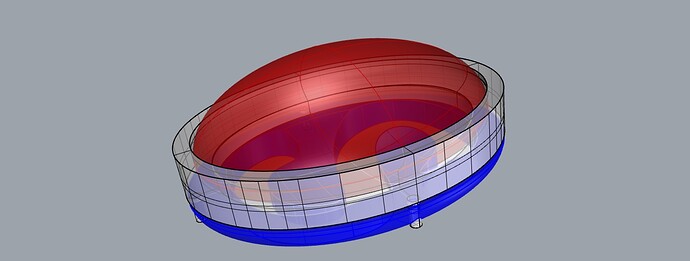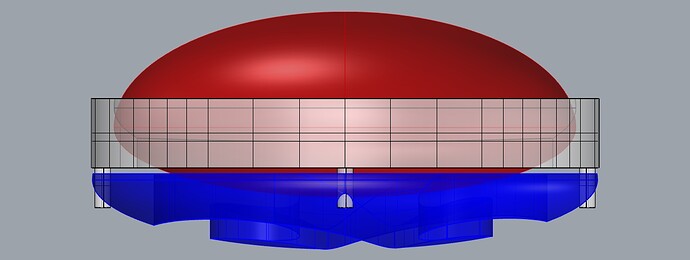Would this work for you?
Bezel with pins = Black/White/Grey
UnderBezel/Gallery = Blue
Stone=Red
I left a gap for illustration purposes…
many thanks to all the generous people who offered advice on the prongs and tabs. I feel much more confident now and I’m satisfied with the results. you’re the best!
What do you mean by a press fit, please? Thanks in advance. ![]()
![]()
![]()
There’s a lot of great suggestions in this thread!
I don’t see anywhere what kind of metal is going to be used in the setting, though. I would approach it differently if I was setting an opal of this size in silver, 14 kt, 18 kt. yellow or white gold.
What kind of metal are you thinking about in the setting?
Thanks!!
Jeff
One other thing to add is that there are a mixture of responses for either casting or fabricating. The answer really depends on whether you want to cast or fabricate this pendant, because they are potentially very different setting techniques. Casting is often heavier, but can give more metal to work with. Fabricating is often lighter, more minimal and less cost.
In the last jewelry store that I worked in, I set a zillion bezel-set opal pendants and earrings for the owner with 22 kt. yellow bezels and 14 kt. base plates. The 22 kt. was softer, less precarious to set and gave the earrings & pendants a two-tone look. I always set the pieces in Jet Set Basic (not regular Jet Set) to securely hold them before setting. Then to set I did a mixture of pushing the bezel over with a bezel pusher and hammer setting, both with a hammer handpiece and a hammer and punch. These settings for the jewelry store were all were closed back, but I could have easily made them open back too.
Hammer setting an easy-to-break, expensive stone takes some practice, but once you have those skills, I personally think it’s often easier than other forms of setting, because the hammer blow pressure is more on the metal, than stone. But like I said, it definitely takes practice.
One thing to add with setting from the back in a tab-like scenario. I know one jewelry artist who often sets tricky stones from the back and makes his own custom miniature gold bolts. Then he taps some threads into his cast gold setting and screws in the custom-made gold bolts to hold the stone in place from the back. It’s very slick! The advantage is that you can be certain of exactly how much pressure you are putting on the stone.
Hope this helps!! Sounds like you have a lot to think about. Best of luck!!
Jeff
from all of the suggestions below, there are many ways to approach this… the most important thing to keep in mind however is that a soft, delicate stone, like an opal or pearls have to be handled with care and very gently…opals in particular are not only soft but brittle… never push metal against it with direct pressure…avoid tapping with a hammer… use fine silver or high karat gold, a softer metal. Soft metals have drawbacks in holding but have advantages in being easier to push into place without unwanted pressure against the stone. Prongs per se have to be rounded down to provide a wider surface area to hold the stone rather than concentrating the pressure at a point… be careful!!!
bolts are ingenious!.. hammer setting for the first time has be done on something less breakable than an opal… as you are far more experienced than the average hobbyist, or beginner, mastering hammer setting with light taps might be easy for you but difficult for the first time… I’m advising caution for anyone who is not as experienced… I’ve had my share of disasters…

